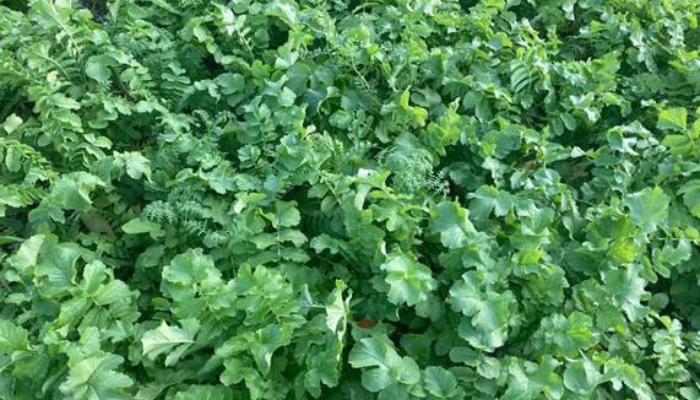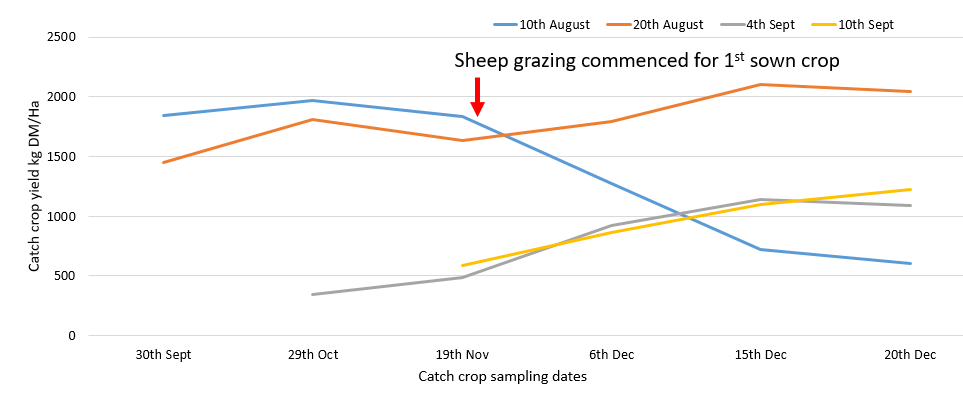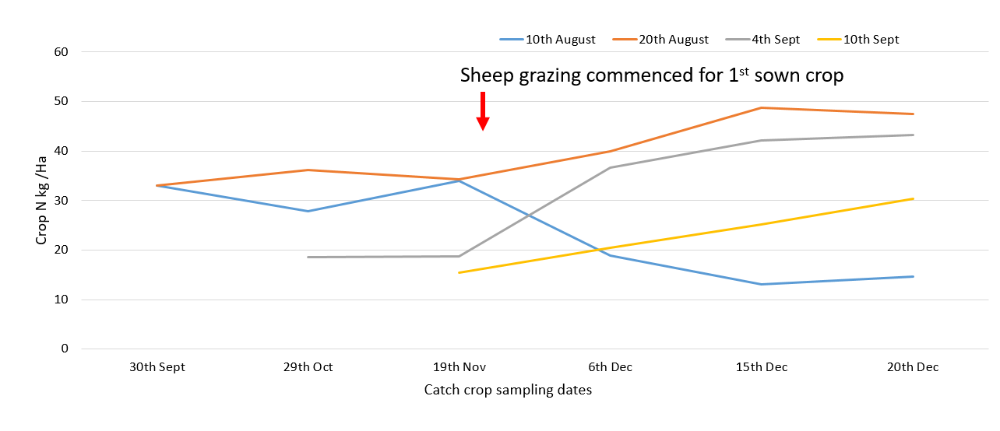28 August 2023
The role of catch crops in nitrogen uptake

Catch crops, also known as cover crops or green manure, are a valuable tool for protecting soil health and water quality. Dr. Bridget Lynch, Senior Researcher Officer in the Teagasc Agricultural Catchments Programme, tells us more.
Catch crops are commonly used in Ireland as part of various environmental schemes such as the Green Low-Carbon Agri Environmental Scheme (GLAS) and the Agri-Climate Rural Environment Scheme (ACRES). Catch crops are planted during fallow periods to protect the soil from heavy rainfall and erosion and increase water infiltration. They also utilise residual soil nutrients and prevent leaching of soluble nutrients, contributing to soil health and water quality. Additionally, their strong root systems condition and improve soil structure, making it easier for cultivation, and the remaining plant matter enhances the soil’s organic carbon content.
On free-draining sites, prone to nitrate leaching, research has shown that overwinter green cover can substantially reduce nitrate leaching to ground water from fallow crop land. The Agricultural Catchments Programme has been monitoring a tillage dominant river catchment in Castledockrell, Wexford since 2008 and has been focusing on winter green cover research. Ireland’s 5th Nitrates Action Programme (NAP), requires in all circumstances that 75-80% of harvested crops be shallow cultivated or sown with a crop within 14 days of harvest. The earlier the green cover is established, the more nitrogen it can capture.
In 2021, four catch crops with a range of sowing dates were selected for sampling. Table 1 details the sowing dates and preceding agronomic detail. All crops were rape/leafy turnip.
Table 1: Sowing date and agronomic detail of catch crops selected for crop sampling 2021
| Date of sowing | Crop following | Sowing method | Added nutrients | Seeding rate |
|---|---|---|---|---|
| 10th August | Spring barley | Disc tilled with spinner on back | Pig slurry <1,000gal/ac | 8kg/ha |
| 20th August | Winter barley | Spirit one-pass drill | 1 bag of 18-6-12 | 8kg/ha |
| 4th September | Spring barley | Disc tilled with spinner on back | 0 | 8kg/ha |
| 10th September | Spring barley | Direct drill | 0 | 8kg/ha |
Above ground crop samples were taken for dry matter yield determination (Figure 1) and crop nitrogen percentage (Figure 2). The August-sown crops yielded much more biomass than the September-sown crops through the sampling period. In addition, those that were not grazed had a peak uptake of nitrogen of 48kg/ha N and 43kg/ha N for the 20th August and 4th September sowing dates. This shows the importance of sowing catch crops as early as possible after harvest in order to get a peak crop yield of over 1,000kg DM/ha.
Figure 1. The effect of sowing date on yield (kg DM/Ha) of catch crops at six dates in autumn 2021

Figure 2. The effect of sowing date on crop N (kg N/Ha) of catch crops at six dates in autumn 2021

Farmers’ knowledge
An additional study investigating farmers’ knowledge, experience, and perspectives on catch crops was carried out in order to understand how extension services can be improved and ultimately increase area sown under catch crops. This included key informant interviews, a questionnaire, and semi-structured interviews with farmers and culminated in a knowledge transfer campaign, with a field-scale demonstration site being the focal point for tillage discussion groups. The site demonstrated the effect of sowing date (19th August / 2nd Sept), post-sowing rolling (with or without), and mixture type (1. Leafy turnip and forage rape; 2. Raddish, mustard, vetch, clover and rape; 3. Phacelia, vetch and clover).
The 2022 study found that catch crops are viewed positively by farmers, with a significant proportion motivated by their positive impact on soil health and structure. Incentivising farmers through schemes such as GLAS can have a positive impact on their motivation to continue growing catch crops well beyond the period being funded. Participatory extension approaches such as discussion groups and demonstrations, collaboration with industry representatives, public agencies, and policymakers, and ongoing support and guidance were identified as important in promoting the adoption of catch crops.
This article was first published as part of Agricultural Catchments Week 2023. The ACP is funded by the Department of Agriculture, Food and the Marine, and staff have been working with more than 300 farmers across six catchments in Ireland for over 10 years.
Also read: Slight easing of catch crop lie-back rule
Also read: Stubble cultivation and its role in controlling problem grass weeds
